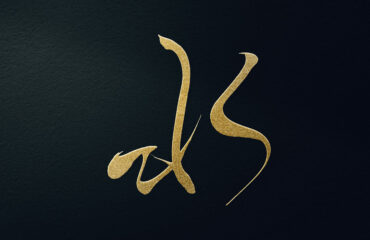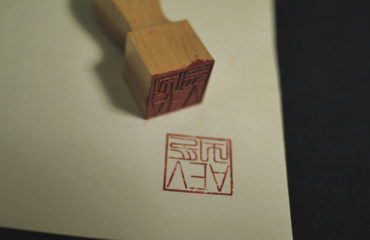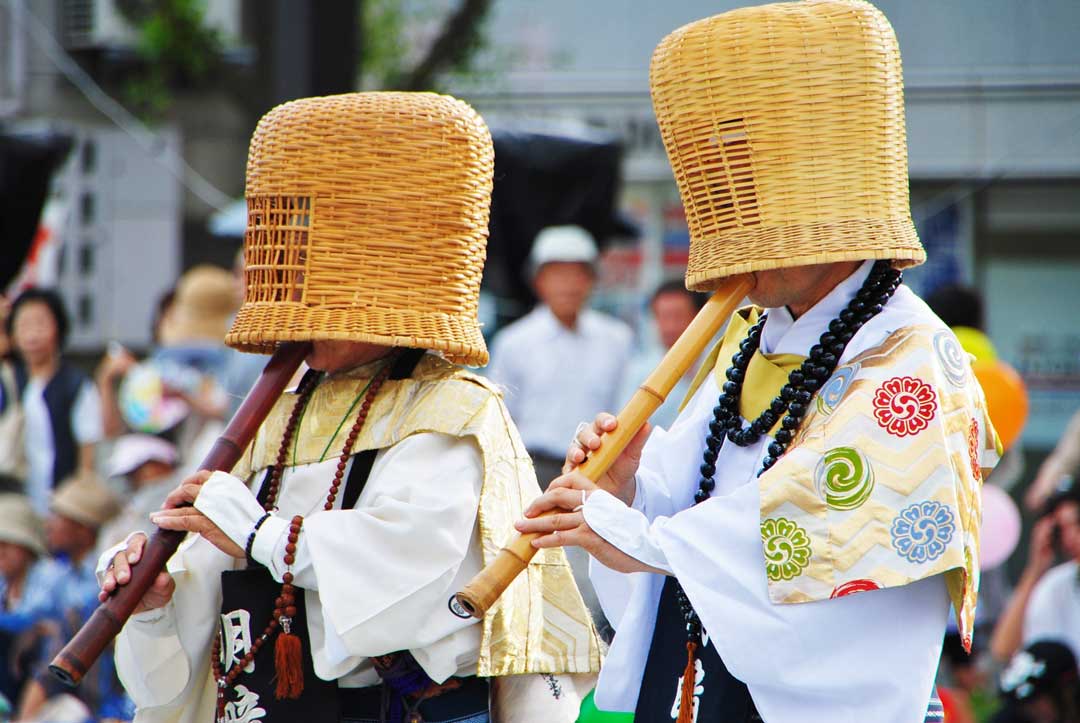
Japanese traditional musical instruments are filled with numerous charms.
Each instrument possesses unique tones and playing techniques, enriching the cultural tapestry of Japanese music.
In the following, we will explore and introduce several representative instruments.
Shakuhachi (尺八)
The shakuhachi is a bamboo flute renowned for its distinct tone.
It is often used in Zen meditation and tea ceremonies.
Through breath control and finger techniques, performers create expressive melodies, captivating listeners with their evocative music.
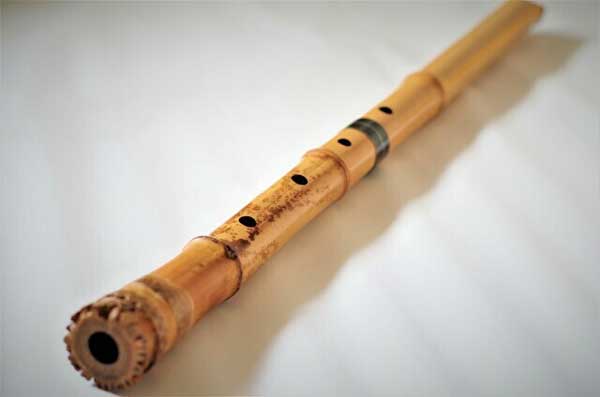
Ryuteki (竜笛)
The ryuteki is a flute shaped like a dragon, hence its name.
It is commonly employed in festivals and theatrical performances.
The unique shape enables the player to evoke the sound of a dragon.
The resonant sound of the ryuteki adds grandeur and sacredness to the atmosphere.
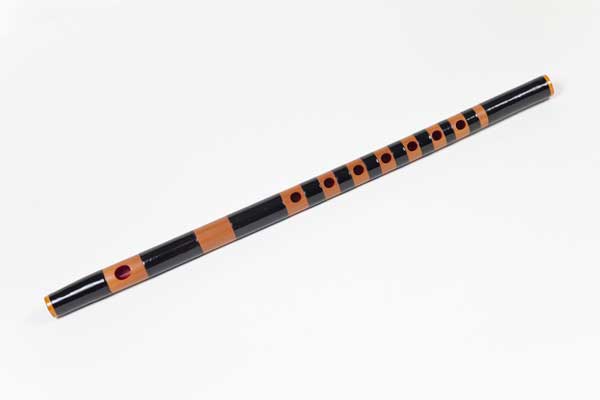
Nohkan (能管)
The nohkan is a wind instrument used as an accompaniment in Noh theater.
It possesses distinctive tones and expressive capabilities.
By covering and uncovering finger holes, performers can change the pitch and create a rich soundscape, contributing to the narrative in the world of Noh theater.
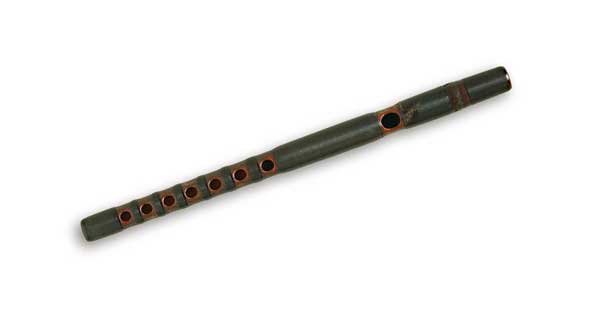
Shinobue (篠笛)
The shinobue is a bamboo flute often used in traditional Japanese music such as Gagaku and Minyo.
Crafted from a single piece of bamboo, the shinobue has multiple holes that the performer manipulates using their fingers and lips, producing a wide range of melodies.
Its gentle and soothing sound resonates harmoniously with nature.
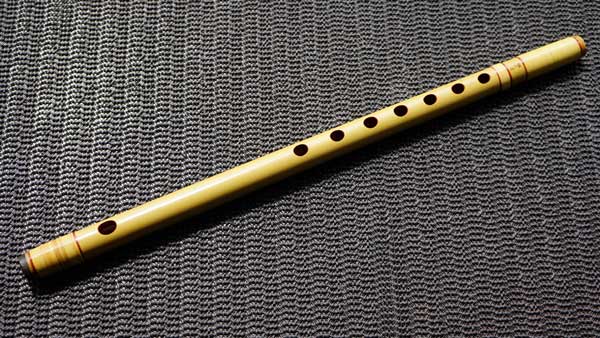
Shō (笙)
The shō is a wind instrument constructed from bamboo or reed, traditionally employed in court music and Gagaku.
It features multiple pipes, and the performer controls the pitch by blowing into them while manipulating finger holes.
The shō’s unique sound and resonating effects contribute to creating an elegant and sacred ambiance.
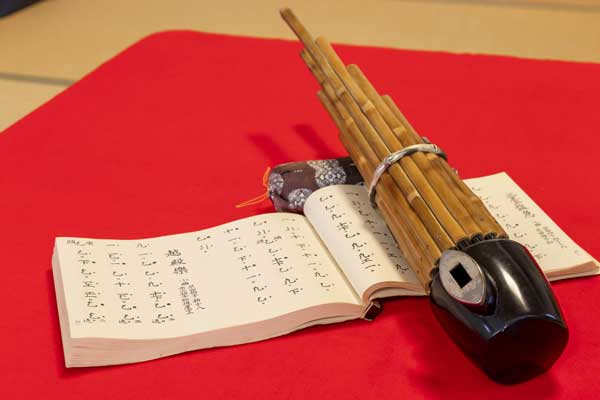
Hichiriki (篳篥)
The hichiriki is a double-reed wind instrument that originated in ancient China and is now an integral part of Japanese traditional music.
It is commonly used in Gagaku, the court music of Japan.
The hichiriki’s distinctive sound and expressive capabilities contribute to the rich tapestry of Gagaku, evoking a sense of majesty and solemnity.
The performer uses their breath and fingering techniques to create a wide range of melodies and ornamentations.
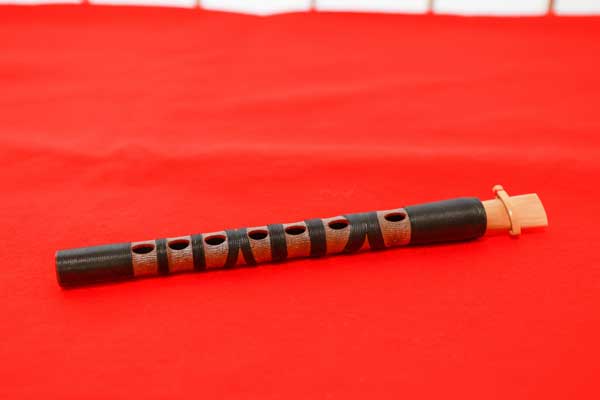
Tsuzumi (鼓)
The tsuzumi is a traditional Japanese drum with an hourglass shape and two drumheads.
It is played by striking the drumheads with the hands and fingers, creating a wide range of tones and rhythms.
The tsuzumi is commonly used in various theatrical forms such as Noh, Kabuki, and Bunraku, providing dramatic accents and dynamic beats.
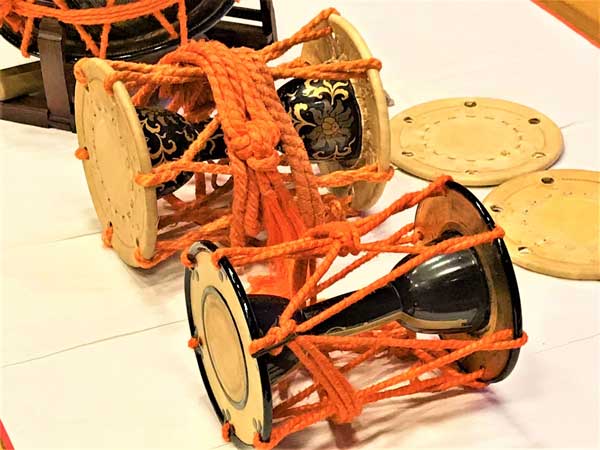
Wadaiko (和太鼓)
Wadaiko, or Japanese taiko drums, are a group of drums that come in different sizes and shapes.
They are played with bachi (drumsticks) and produce powerful, resonant sounds that reverberate through the air.
Wadaiko performances are often energetic and visually captivating, reflecting the spirit and strength of Japanese culture.
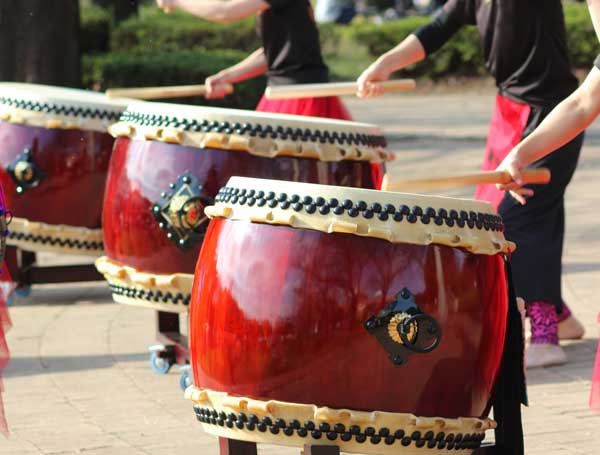
Biwa (琵琶)
The biwa is a fretted lute-like instrument with four strings, originally introduced from China.
It is played by plucking the strings with a plectrum.
The biwa has a rich history and is associated with storytelling and narrative traditions such as Heike biwa.
The melancholic and evocative sound of the biwa is often used to depict tales of heroism, tragedy, and love.
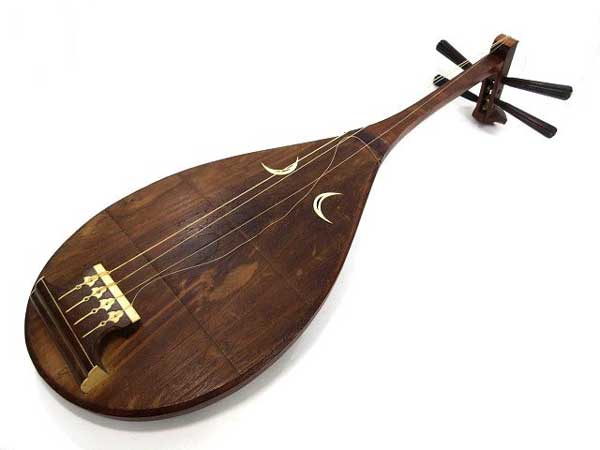
Horagai (法螺貝)
The horagai, also known as the conch shell trumpet, is a unique wind instrument used in religious and ceremonial contexts.
It is made from a large sea shell, often decorated with intricate designs.
The horagai produces a deep, rich sound that carries a sense of sacredness and tradition.
It is commonly played in Buddhist rituals, Shinto ceremonies, and processions.

Mokugyo (木魚)
Mokugyo is a wooden percussion instrument with a distinctive shape.
The performer strikes the Mokugyo with both hands, creating resonating sounds.
The unique and deep tones of the Mokugyo evoke a sense of tranquility.
It is primarily used in Buddhist religious ceremonies and meditation practices, helping to focus the mind with its rhythmic sound.
Additionally, the sound and rhythm patterns of the Mokugyo are utilized in music and stage performances for dramatic effect.
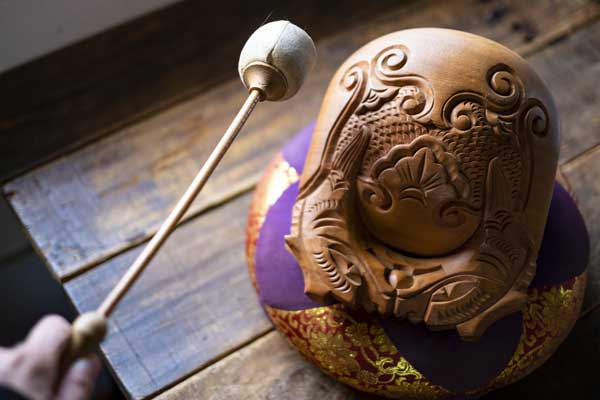
Kagura Suzu (神楽鈴)
Kagura Suzu is a type of bell percussion instrument used in Kagura and religious ceremonies.
The bell is made of metal, and the performer shakes or strikes it with strings or sticks to produce sounds.
The pure and elegant tones of Kagura Suzu enhance the sacred atmosphere of rituals.
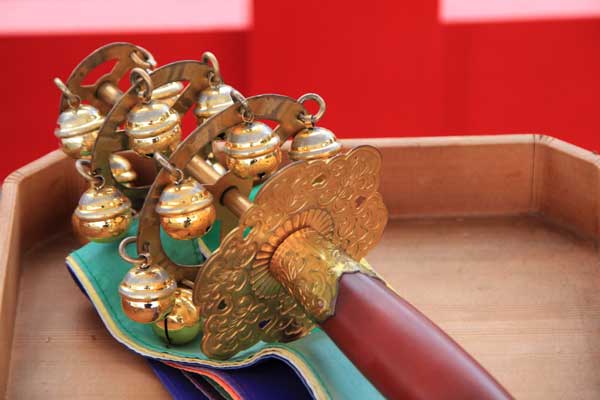
Sanshin (三線)
Sanshin is a three-stringed musical instrument predominantly played in Okinawa, known for its important role in Ryukyuan music.
With its three strings, the performer plucks them using fingers or picks while playing.
Its unique sound accentuates the expressive power of emotive Ryukyuan music.
Sanshin is widely used in Ryukyuan dance, folk songs, and festivals, carrying the distinctive charm of Ryukyuan culture.
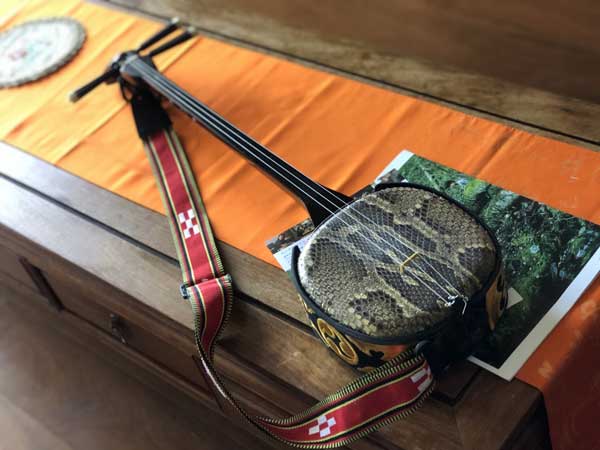
Kokyū (胡弓)
Kokyū is a bowed string instrument introduced from China, playing a significant role in traditional Japanese music as well.
Kokyū is played by bowing the strings, producing a melancholic and soulful sound.
It accompanies Gagaku and Noh performances and is also performed as a solo or in improvisational settings.
Its resonant tones evoke deep emotions and resonate with the listeners’ hearts.
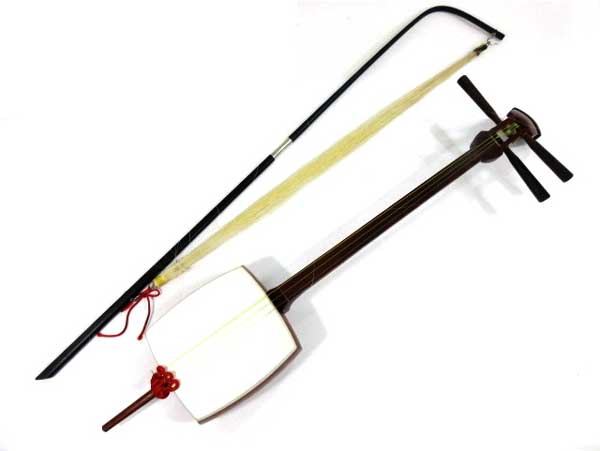
Shamisen (三味線)
Shamisen is a traditional three-stringed instrument that holds a prominent place in Japanese music, ranging from classical genres to folk traditions.
With its distinct sound and versatile playing techniques, the shamisen captivates audiences with its powerful and emotive melodies.
The performer plucks and strums the strings using a plectrum called a bachi, creating a wide range of expressive tones and rhythms.
Whether in traditional ensembles or modern interpretations, the shamisen’s resonant sound and rich cultural heritage continue to enchant listeners around the world.
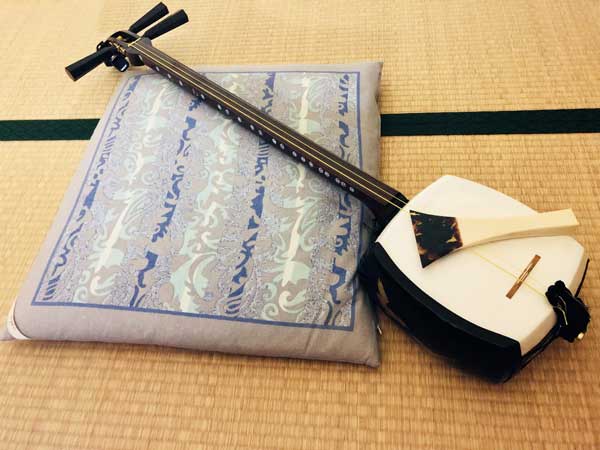
Conclution
Traditional Japanese musical instruments possess diverse tones and captivating charm, enriching the cultural landscape of Japanese music.
Instruments such as shakuhachi, taiko drums, koto, shamisen, shō, and hichiriki each express their unique musicality, playing an indispensable role in traditional Japanese music.
Through these instruments, experience the enchanting allure and profound emotions of Japanese music.
Other Introduction
Tradition of Japanese Tea Ceremony – Sado

